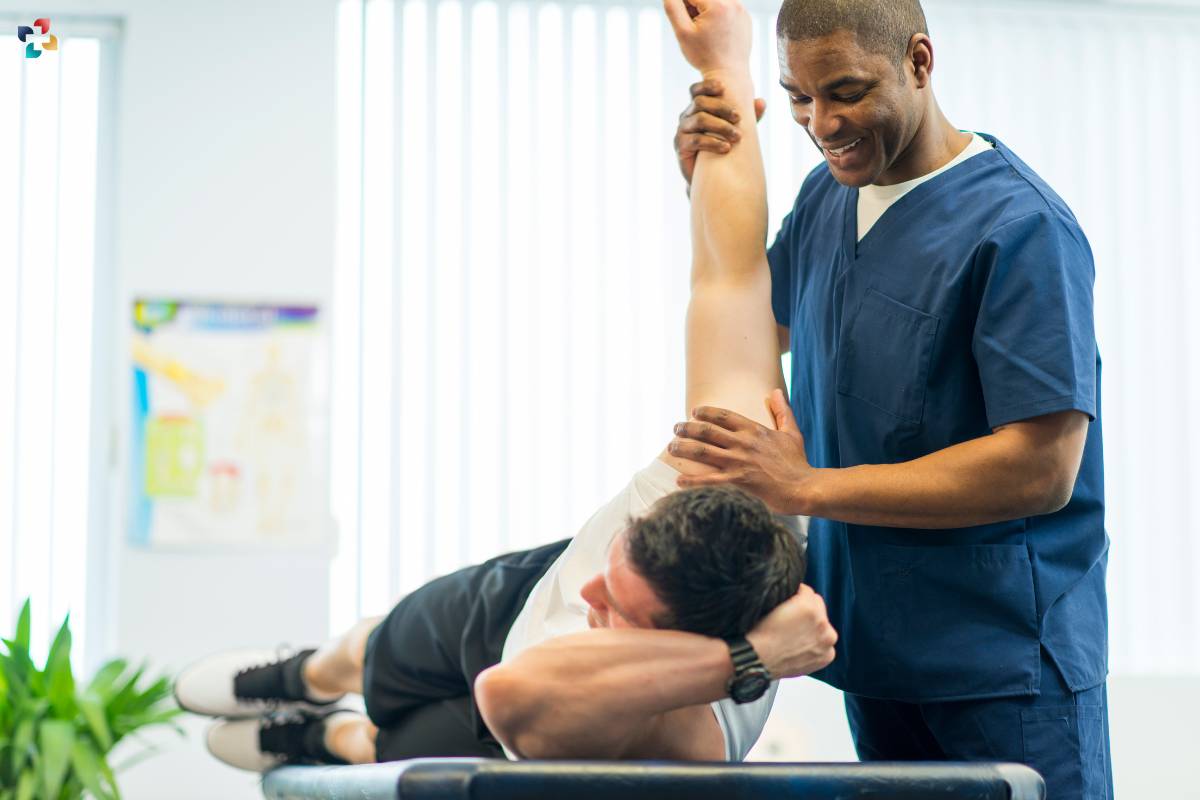In the fast-paced world of sports, athletes who want to perform at their best must prioritize their physical health. Let me introduce sports medicine physical therapy, a specialized field that aims to prevent, treat, and heal injuries unique to athletes. This article examines how important sports medicine physical therapy is for improving performance, developing athletic resilience, and promoting a quick recovery from injuries.
1. Understanding Sports Med Physical Therapy
A. Defining Sports Med Physical Therapy
Sports med physical therapy is a specialized discipline within physical therapy that caters to athletes and individuals engaged in physical activities. It involves the assessment, treatment, and rehabilitation of injuries related to sports and exercise. Sports med physical therapists work collaboratively with athletes to optimize performance, prevent injuries, and expedite recovery.
B. The Interdisciplinary Approach
Sports med physical therapy operates at the intersection of sports medicine and physical therapy. This interdisciplinary approach involves close collaboration with orthopedic specialists, sports physicians, and other healthcare professionals to provide comprehensive care tailored to the unique needs of athletes.
2. The Role of Sports Med Physical Therapy in Injury Prevention

A. Preventing Common Sports Injuries
Sports med physical therapists play a proactive role in preventing common sports injuries. Through targeted exercises, stretching routines, and biomechanical assessments, therapists identify and address potential risk factors, helping athletes build strength, flexibility, and resilience to reduce the likelihood of injuries.
B. Customized Conditioning Programs
Athletes benefit from customized conditioning programs designed by sports med physical therapists. These programs not only enhance overall fitness but also target specific muscle groups and movement patterns relevant to the athlete’s sport. Tailored conditioning contributes to improved performance and reduced vulnerability to injuries.
3. Managing Sports Injuries: From Assessment to Rehabilitation
A. Comprehensive Injury Assessment
When injuries occur, sports med physical therapists conduct comprehensive assessments to diagnose the nature and extent of the injury. These assessments may include a range of motion tests, strength evaluations, and functional movement analyses to pinpoint the source of the problem.
B. Individualized Treatment Plans
Based on the assessment, sports med physical therapists develop individualized treatment plans. These plans often incorporate a combination of manual therapy, therapeutic exercises, and modalities such as ultrasound or electrical stimulation. The goal is to facilitate a targeted and efficient recovery process.
C. Rehabilitation and Functional Restoration
Rehabilitation is a key component of sports med physical therapy. Therapists guide athletes through progressive rehabilitation exercises to restore function, regain strength, and address any imbalances or compensations that may have developed during the injury. The focus is on returning the athlete to their pre-injury level of performance.
4. Performance Enhancement Through Sports Med Physical Therapy
A. Biomechanical Analysis for Performance Optimization
Sports med physical therapists employ biomechanical analysis to evaluate an athlete’s movement patterns. By identifying inefficiencies or areas of weakness, therapists can develop strategies to optimize performance, enhance efficiency, and reduce the risk of overuse injuries.
B. Sport-Specific Training Programs
Tailoring training programs to the specific demands of a sport is a hallmark of sports med physical therapy. Whether it’s agility drills for soccer players or shoulder stability exercises for swimmers, these programs are designed to improve sport-specific skills while minimizing the risk of injuries.
5. Incorporating Advanced Technologies in Sports Med Physical Therapy

A. Utilizing Technology for Assessment and Rehabilitation
Sports med physical therapy embraces cutting-edge technologies to enhance assessment and rehabilitation. From motion analysis systems to wearable devices that track movement and muscle activation, these tools provide valuable insights for therapists to fine-tune treatment plans and monitor progress.
B. Telehealth in Sports Med Physical Therapy
The advent of telehealth has extended its reach to sports med physical therapy. Athletes can now receive virtual consultations, guidance on home exercises, and ongoing support from their therapists. This technological integration enhances accessibility and continuity of care, especially for athletes in remote locations.
6. The Crucial Role of Patient Education
A. Empowering Athletes with Knowledge
Patient education is a cornerstone of sports med physical therapy. Athletes are educated about their injuries, rehabilitation process, and preventive strategies. This empowerment not only fosters active participation in the recovery journey but also equips athletes with the knowledge to make informed decisions about their training and well-being.
B. Promoting Long-Term Wellness Habits
Sports med physical therapy extends beyond injury management. Therapists work with athletes to cultivate long-term wellness habits, including proper warm-up and cool-down routines, effective recovery strategies, and lifestyle modifications that support overall health and performance.
7. Sports Med Physical Therapy in Different Athletic Disciplines
A. Tailoring Approaches to Varied Sports
Different sports impose unique physical demands on athletes. Sports med physical therapists tailor their approaches based on the specific requirements of each sport. For example, a runner may receive a different treatment plan than a basketball player, considering the distinct stresses placed on their body.
B. Addressing Overuse Injuries in Endurance Sports
Endurance athletes, such as runners or cyclists, often face overuse injuries due to repetitive motions. Sports med physical therapists specialize in addressing these issues, incorporating strategies to manage overuse injuries, improve biomechanics, and optimize training loads.
8. Collaboration and Integration with Sports Medicine Professionals
A. Team Approach to Athlete Care
The team approach is fundamental in sports med physical therapy. Collaboration with sports medicine physicians, orthopedic surgeons, athletic trainers, and other healthcare professionals ensures a comprehensive and cohesive strategy for athlete care. This collaborative effort maximizes the effectiveness of treatment plans and accelerates the return to play.
B. Post-Surgical Rehabilitation
In cases where surgical intervention is required, sports med physical therapists play a crucial role in post-surgical rehabilitation. Guiding athletes through a structured recovery program helps restore function, minimize scar tissue, and gradually reintroduce them to sport-specific activities.
9. Looking Ahead: Evolving Trends in Sports Med Physical Therapy

A. Integration of Data Analytics
The integration of data analytics is a burgeoning trend in sports med physical therapy. Analyzing data on an athlete’s performance, biomechanics, and injury history allows therapists to make data-driven decisions, tailor interventions, and continuously refine treatment plans.
B. Preventive Performance Screening
Preventive performance screening is gaining prominence to identify potential risk factors before injuries occur. By conducting comprehensive screenings, sports med physical therapists can pinpoint areas of weakness or imbalance, enabling proactive interventions to prevent injuries and optimize performance.
Conclusion: Elevating Athletic Wellness Through Sports Med Physical Therapy
An essential component in the quest for resilience and athletic success is sports-med physical therapy. This specialized field is essential to the overall treatment of athletes since it addresses everything from injury prevention to rehabilitation, performance optimization, and embracing technology improvements.
The impact of sports medicine and physical therapy on athlete performance and well-being is expected to grow as it develops further. Sports medicine physical therapy is not only a treatment option; it is a driving force that helps athletes regain strength, agility, and the enjoyment of their favorite activity. This is achieved via cooperative efforts, customized care plans, and a dedication to empowering athletes.
Also Read: Are You Ready to Return to Sports?











